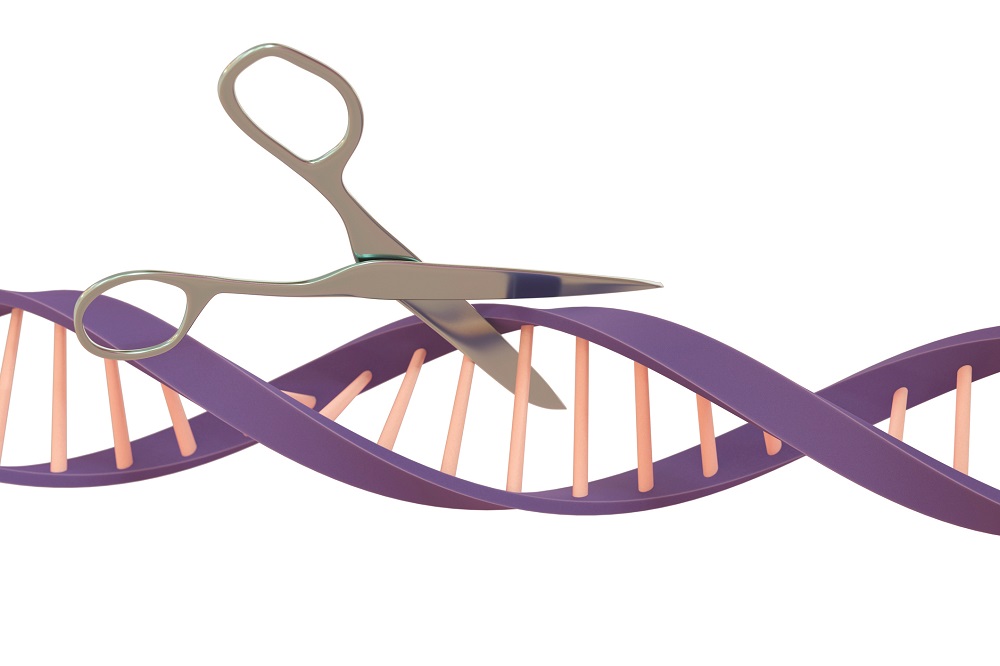In December 2023, the U.S. Food and Drug Administrations (FDA) announced approval of a milestone treatment for sickle cell disease: the first treatment to use a revolutionary gene editing tool called CRISPR. You will be hearing a lot about CRISPR in the future: It has been called a revolutionary technology that could change the world.
Let’s take a look at how it works. Start with the idea that a gene is a segment of your DNA that contains instructions for producing a specific protein that your body needs. Sometimes, there are mistakes in the instructions, called gene mutations. These mutations can lead to genetic diseases like sickle cell disease. Simply speaking, CRISPR is a tool that allows a doctor or scientist to cut or cut and paste genes, like you do with words on your computer. This is called high-precision gene editing.
The evolution of gene editing
About 20 years ago, researchers discovered that bacteria have repeating segments of genetic codes that read the same backward and forward. In language, this is called a palindrome (e.g., mom, radar, kayak), so these segments were named Clustered Regularly Interspaced Short Palindromic Repeats (CRISPR).
Scientists then learned that CRISPRs were genetic segments taken from invading viruses. Just like human cells, bacterial cells can be infected by viruses. When viruses invade bacteria, bacterial cells can cut out some segments of viral DNA and add those segments to their own DNA as CRISPRs. If the same type of virus attacks again, the bacteria use CRISPRs to identify it. They then use the CRISPR sequence like a GPS to find and destroy the virus. A molecule called guide RNA carries the gene sequence attached to a protein (called Cas9) that can cut the genetic material of the invading virus like scissors. The whole molecule is called CRISPR/Cas9.
The next step
The next big step occurred in 2012, when two scientists discovered that they could reproduce guide RNA and design CRISPR/Cas9 to attach to DNA inside a cell and cut out a mutation gene. This technology also had the potential to cut and paste a new gene into a cell’s DNA. Today that discovery has led to the first FDA-approved gene editing therapy for sickle cell disease.
CRISPR for sickle cell disease
Sickle cell disease is a life-threatening blood disease. A genetic mutation causes a defect in hemoglobin, the protein in red blood cells that delivers oxygen to the body. The mutation causes red blood cells to take on a crescent shape. The abnormally shaped blood cells are unable to flow normally through blood vessels. They can stick together, back up, and block blood flow, causing severe pain, damage to blood vessels, and sometimes a deadly stroke. They also die off in large numbers, causing severe anemia. Life may be shortened by damage to the heart, lungs, and kidneys.
The CRISPR-based treatment, called Casgevy, cuts out a “switch” gene that triggers immature red blood cells to become adult red blood cells. Since only adult cells become sickle cells, cutting out the switch gene stops red cells from becoming sickle cells.
Hematopoietic stem cells that will develop into young blood cells are removed from the patient’s blood and then shipped to a lab, where they are treated with the CRISPR/Cas9 technology to edit the switch gene. Gene editing outside the body is called ex vivo treatment. To get the CRISPR/Cas 9 into millions of stem cells, a process called electroporation is used. The cells are exposed to electrical pulses to open tiny pores in the cells that CRISPR/Cas 9 can pass through.
Before the gene-edited cells can be returned by transfusion, the patient must be treated with chemotherapy to eliminate the bone marrow that produces the mutated version of blood cells, so the edited cells can take over the process of oxygen delivery. The process is time consuming and expensive, costing more than $2 million, but the studies used to approve this treatment demonstrated a 93 to 94 percent success rate in eliminating sickle cell symptoms.
Researchers are hard at work finding ways to make the process simpler, less expensive, and accessible to anyone who could benefit.
One of the million-dollar questions is how to get CRISPR-Cas9 into cells without removing the cells and without side effects. Some possibilities include coating the CRISPR molecules with a lipid nanoparticle coating or packaging it to a virus that will take it into a cell. It only took about 10 years for scientists to get from the discovery of bacterial CRISPR to human gene editing with CRISPR/Cas9. With many of the world’s brightest minds committed to solving these problems, the CRISPR revolution will continue to move forward, and quickly.
In the future, there may be CRISPR treatments for genetic diseases like diabetes, cancer, blindness, muscular dystrophy, and cystic fibrosis, too. There are literally thousands of genetic diseases that affect humans, so the sky is the limit.
Ethical considerations
CRISPR technology can be used to remove gene mutations and replace mutated genes in a person with a genetic disease. It can also be used to replace less desired genes with more desired genes.
When used in an embryo, CRISPR has the potential to edit genes to make a person taller, more athletic, better looking, or smarter. In fact, in 2018, Chinese researchers were able to edit the genes of twin babies to make them resistant to HIV infection. Several researchers, including pioneers of CRISPR, have called for a moratorium on gene editing in human eggs, sperm, and embryos. CRISPR technology will be a powerful tool in the future of humans, but with great power comes great responsibility.


